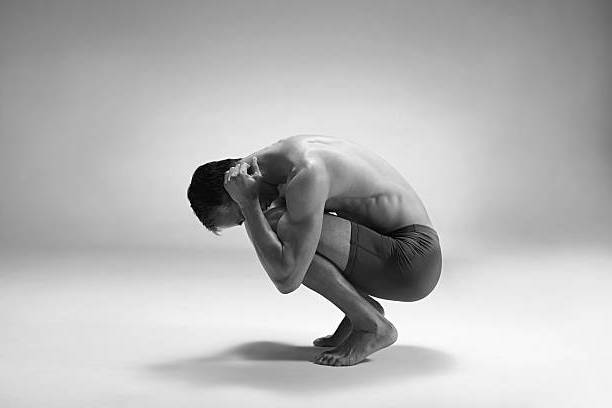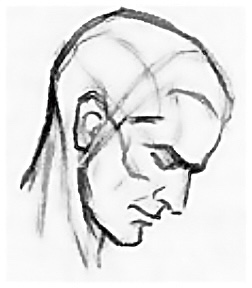Who Is This Page For?
I created this page to help people who, like me until my thirties, have never had the natural ability to burp. After browsing a few forums in multiple languages, I realized that we are far from being the only ones affected by this issue, and it exists worldwide.
The Consequences of Being Unable to Burp
There are plenty of people who report experiencing various troubles due to their inability to release air that naturally builds up, for instance, after eating or drinking. Here are a few examples:
- Uncomfortable sensations in the esophagus when air builds up
- Pressure and abdominal pain, sometimes severe
- Increased intestinal gas
- Unpleasant gurgling sounds
- Severe nausea
For some, these issues can lead to uncomfortable situations that directly impact their social lives, such as avoiding carbonated beverages in public or even avoiding outings altogether.
Why Can’t Some People Burp While Others Do It Naturally?
We were all able to burp as babies. However, my earliest memories of this inability go back to primary school, where I tried mimicking a classmate who could burp almost on command. For me, the mechanism was impossible. From then on, I knew I had this issue, and it stayed with me until I turned 30.
So why did we lose this ability? First, I don’t believe it’s genetic, as those who report this condition are often the only ones in their families affected. One theory I’ve come across is an early phobia of vomiting that could have had physical and/or psychological effects on the mechanics of opening the esophagus. I haven’t found other theories, apart from purely physical limitations that developed during growth. However, I managed to retrain myself, proving it’s not purely physical in my case.
I experienced this retraining as a conscious effort to regain control over a lost ability, much like individuals who regain control over a limb after an accident through rehabilitation. For me, it’s a sense that the brain “erased” by severing neural connections deemed unnecessary.
The medical solution (which I haven’t tried)
Yes, a solution exists. In medicine, this inability to burp is called retrograde cricopharyngeal dysfunction, or R-CPD. To regain this ability medically, the goal is to relax the upper esophageal muscle (called the cricopharyngeal muscle) responsible for the voluntary expulsion of air from the esophagus, through a botox injection. Several people have been able to burp again after this procedure.
Personally, I first sought to verify whether I could retrain myself without needing this injection. To my surprise, it wasn’t that difficult once I had the beginnings of the method…
How I retrained myself to finally burp
I hope that sharing my experience below will help you get rid of this handicap. Feel free to share your testimony in the comments, and also share your own successful experience! This will only enrich this page, for the benefit of as many people as possible 🙏
Facilitating the expulsion of air
My retraining began when I noticed that my throat could expel air without me controlling it, especially when my body was in unexpected contorted positions.
For example, I noticed that air would come out on its own, without me wanting it to, when I was in a curled position like this.


I think this is a position that wraps the digestive tract, putting pressure on the stomach and opening the throat, thus facilitating the expulsion. But it was difficult for me to use this observation to go further.
During the rise of the air, I noticed that keeping my body perfectly straight like an opera singer was helpful for expelling the burp. As long as the air rises, tilting my head upwards seemed to make it rise more easily, but tucking my chin as much as possible against my chest helped it exit, as if the pathways were cleared. Note: Always keep your back straight when lowering your chin, otherwise the body position will be counterproductive.

I noticed that keeping my back straight improved the verticality of the esophagus and thus simplified the air’s upward movement. Keeping the chin tucked when the air is high helps facilitate the opening of the esophagus.
I also noticed that contracting my stomach (or rather, the muscles around it, as if trying to hollow it out) also helped promote the rise of the burp.
Finding the burp mechanism
Once I found the position and repeated it each time the air rose (I sometimes managed to anticipate it, sometimes not), I started reproducing the burping mechanism by pushing from my throat as if I were trying to release something stuck by contracting my vocal cords – which is certainly not possible, but it was just to visualize the mechanism.
This mechanism is not yet mapped by our neurons, so we need to seek it and encounter it several times before our brain absorbs it as a new sense to exploit and create neural connections. This search is essential. At first, of course, nothing happens, and the success rate is 0%. Then, it goes to 1% without really understanding what happened. Then 2%…
Do it again, and again
I kept trying again and again until I realized that with each attempt, a tiny amount of air was expelled.
Day by day, this amount of air increased. After about a month, I felt that the mechanics of “knowing how to burp” was starting to come together: the burp became more automatic, easier, as if my brain was beginning to engrain all the subtleties of this gesture that was becoming less and less foreign to it. I felt that each little amount of air expelled was one more brick to build upon for the next time. Any sense develops through practice, over time.
The essentials of what helped me burp
- When the air rises, encourage its upward movement by standing straight
- When the air is high and trying to exit, lower the chin as much as possible against the chest while keeping the top of the spine straight, relax the esophagus, and if needed, hollow the stomach by contracting the diaphragm
- Repeat again and again to understand what works
The results of the retraining
I think it took me about three and a half months to expel a sufficient amount of air and do so instinctively: I now knew how to burp. But that was just the beginning!
I still continue to work on this burping ability, without really thinking about it, as I feel not all the air is expelled. However, I have noticed clear differences in my daily life: despite not yet mastering everything, the air that used to just rise and fall no longer exists, and my stomach is hardly engaged anymore! In short, a real relief. This motivated me even more to share all this with you! And now that I’ve succeeded, I wonder how I managed before…
Feel free to share your experience by commenting below! Whether you are retraining or not, the comments are there so everyone can support and advise each other on the subject, in listening and kindness !
– Blaminhor
Leave a Reply